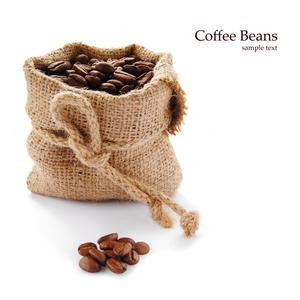Basic knowledge of coffee how to choose and buy a fully automatic coffee machine
Knowing the main differences between automatic, semi-automatic and manual makes coffee machine shopping easy. The difficulty lies in how you make decisions among the many fully automated machines. Theoretically, all automata have the same basic functions, but the price difference lies in their "additional functions."

You may find a list of features on a machine. But if you're not an Espresso expert, it may only solve half your problem. Knowing what each function does makes you aware of what is essential and what is extravagant.
First of all, we want to list what are the standard functions of full automata. All fully automatic machines automatically grind the beans and load the coffee powder into the making module, where it is compacted and brewed. You can choose the cup size of coffee by machine. The fully automatic coffee machine also provides hot water and steam. Coffee is brewed with water or steam from a tank attached to the machine, heated to the appropriate temperature by a small boiler.
What we will discuss below are what we consider "add-ons," such as processes, settings, or parts that are present on some fully automated machines and not on others.
Use the second coffee.
This feature is designed for users who like point changes. In the automatic machine bean bin, full of commonly used coffee beans, if you want to use other coffee beans (powder), you must remove the original beans from the coffee bean bin. This is troublesome because it is difficult to remove all the beans, some of which have entered the grinder. With this function, you can grind the beans and add them to a bin designed for the second coffee. Usually a cup of Espresso with the amount of powder is 6-9 grams, most of the coffee machine with this function are only allowed to add 6-9 grams of coffee powder to make a cup of Espresso, if you like Double Espresso, you must make a cup after the cup. Some machines use a non-removable brewing unit that accepts 5-16 grams of coffee powder, so your Double can be completed in one step. Remember that the second coffee function accepts only coffee powder, not any coffee beans.
Single or two heating systems
Fully automatic coffee machines usually take 43 seconds to heat up from brewing temperature to steam temperature, and there are two heating systems that actually eliminate waiting times. Fully automatic thermal resistance plate heating unit for general use. During heating from brewing temperature to steam temperature, water passes through the heater plate in small quantities, so time is required in the transition. The dual heating system allows you to brew coffee simultaneously with steam, without having to fill a boiler to cool down (to brewing temperature) after steam is used up.
Digital Display VS Indicator
If you don't like flashing lights, the digital display function is designed for you. Digital displays tell you what the machine is ready to do; what it is doing; or what it needs to do. Like a combination light, the display tells you when you're out of beans or need water. An indicator light may indicate more than one error message, and a numeric display will tell you a particular error message. On some machines, the digital display will tell you how much coffee is being made, provide options for program settings, and even show the total number of cups made since start of use.
program settings
Many automatic coffee machines have program setting function, but different models can program setting function and form vary. Here we list some of the features that are commonly available in programs.
cup volume control
Every automatic coffee maker can adjust the amount of coffee it delivers, but not all machines can be programmed. With this feature, you can set each coffee button to emit a certain amount of coffee. Some machines can also set the amount of hot water released.
Pre-grinding function
This feature speeds up your coffee making time. After making one cup of coffee, the grinder has begun grinding and filling the next cup of coffee into the making unit to wait for the next cup to be brewed. When you press the button to make the next cup, the coffee machine starts brewing immediately without waiting for the grinding process. The disadvantage of this function is that ground coffee powder will lose its freshness if it is left too long.
prefabricated function
When you enable this function, the coffee powder is soaked with a small amount of water and wait for about 1 second before the formal preparation begins. This feature enables coffee powder to be extracted better. Prefabricated function can also be placed punching uneven. When using this function, you will notice that a few drops of coffee drip out after the grinding process, and after a short pause, the coffee brewing begins.
temperature control
Espresso is usually made at an outlet temperature of about 85℃. When it reaches your coffee cup, the temperature drops to about 74℃. Preheating your coffee cup (or Espresso cup) reduces cooling. But if you are not satisfied, you can set your own coffee temperature. In most coffee makers, the coffee outlet temperature is about 77 C when the temperature is set to "high." As you can see from the figures above,Espresso is made at a much lower temperature than drip coffee. Drip coffee is usually made at temperatures ranging from 90 C to 96 C.
Coffee Bean Dosage Adjustment
The amount of coffee beans used in each preparation can be adjusted, allowing you to adjust the coffee strength to different amounts of water and different flavors. Coffee machine with removable brewing unit, adjustable range of beans made at a time between 6-9 g. Non-removable coffee maker, adjustable from 5-16 g, machine to machine. High dosage allows you to make a Double Espresso with one click.
Removable and non-removable manufacturing assemblies
The manufacturing component is the coffee brewing component. The advantage of removable manufacturing units is that you can remove them for inspection and cleaning. You can remove it very easily without any tools. The production unit can often be removed and rinsed to clean coffee grounds and coffee oil. The machine with non-removable components does not need manual cleaning, and the machine will do automatic washing when starting and shutting down.
Coffee cup preheating plate
Automatic coffee machines usually have a cup warmer, but not as standard. Serving coffee in a cold cup will definitely damage the taste of coffee. A preheated cup will only make you more satisfied with your coffee. Most thermostats are active and have a separate heating system. The passive preheating plate uses the preheating of coffee making, so the effect is slower.
Flour powder thickness regulation
Most fully automatic coffee machines allow you to adjust the grinder. If your coffee is too weak or too strong (bitter), you can adjust the grinder settings. Finer ground beans make coffee stronger, but too fine can make coffee bitter and may slow coffee flow. On the contrary, if the ground beans are coarser, the coffee will be weaker and lack the feeling of enjoyment.
Important Notice :
前街咖啡 FrontStreet Coffee has moved to new addredd:
FrontStreet Coffee Address: 315,Donghua East Road,GuangZhou
Tel:020 38364473
- Prev

The grinding tools of coffee beans are bean grinders, which can be slightly divided into three types.
The grinding tool for coffee beans is a bean grinder. Bean grinders can be slightly divided into three types: ● household manual rotary bean grinder. (suitable for demand
- Next

Classic Coffee Fancy Coffee Basics of Countries
Viennese Coffee: Enjoy a comfortable mild coffee in the charming season: Viennese Coffee This Viennese coffee has a unique drinking method. Without stirring, it starts with cold cream, which feels very comfortable, then drinks hot coffee, and finally feels the sweetness of granulated sugar, which has three different tastes. Preparation method: Pour 3 tsp coffee granulated sugar or coarse granulated sugar into a cup, then add deep fry
Related
- Beginners will see the "Coffee pull flower" guide!
- What is the difference between ice blog purified milk and ordinary milk coffee?
- Why is the Philippines the largest producer of crops in Liberia?
- For coffee extraction, should the fine powder be retained?
- How does extracted espresso fill pressed powder? How much strength does it take to press the powder?
- How to make jasmine cold extract coffee? Is the jasmine + latte good?
- Will this little toy really make the coffee taste better? How does Lily Drip affect coffee extraction?
- Will the action of slapping the filter cup also affect coffee extraction?
- What's the difference between powder-to-water ratio and powder-to-liquid ratio?
- What is the Ethiopian local species? What does it have to do with Heirloom native species?

